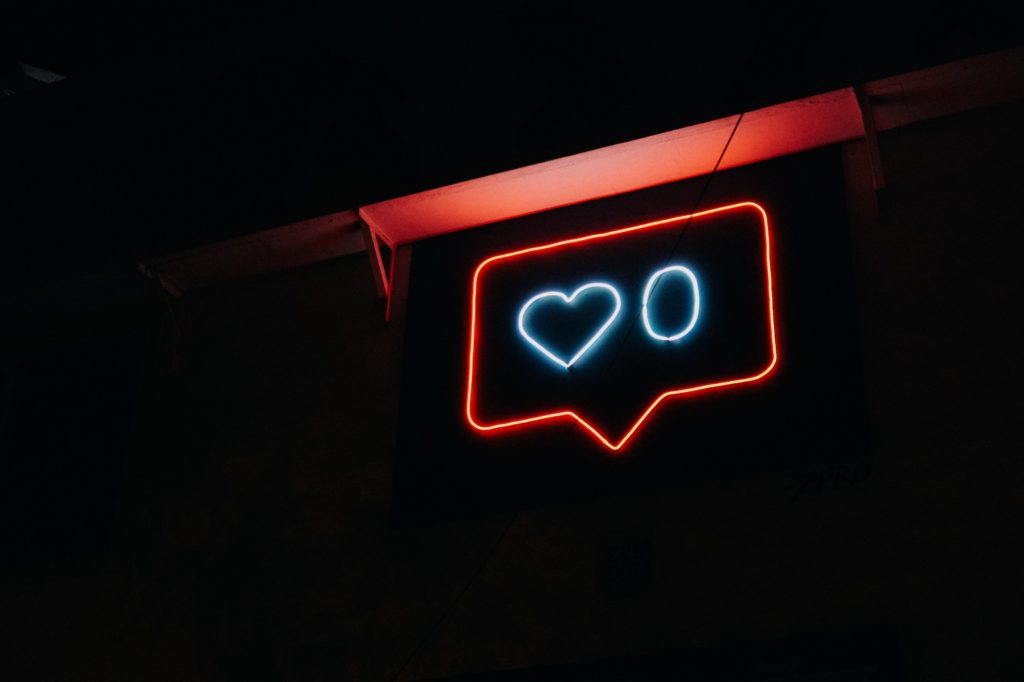Don’t Freak Out About Instagram Likes

You Like Me, You Really Like Me!: What Marketers Can Take Away From Instagram Hiding Likes
Whether you’re an avid user of the platform or not, you’ve likely heard that Instagram began hiding post likes from the public starting back in November. Meaning that you will still be able to view likes on the back end, but your followers will only see who has liked your post, not how many people have liked it.
Understanding Why Likes Have Disappeared
To understand how Instagram’s decision to hide post likes from public view will affect the marketing industry, we have to understand why they were removed in the first place.
“It’s about young people,” Instagram CEO Adam Mosseri told Wired. “The idea is to try to ‘depressurize’ Instagram, make it less of a competition and give people more space to focus on connecting with people that they love, things that inspire them.”
This shifted focus on what you post, rather than how many likes you get, is part of a larger conversation regarding social media’s effect on mental health. In October, Instagram announced that they were removing all augmented reality filters that depict or promote cosmetic surgery over concerns of users’ mental health and body dysmorphia. A recent study also found that Instagram is, potentially, the most detrimental social networking app for the younger generation’s mental health, especially young women.
These unrealistic body standards exhibited by heavily photoshopped influencers and face-altering filters leave self-esteem hinging upon a simple like on Instagram. These serious and ultimately very lasting effects make it very understandable that Instagram would be motivated to move this change through in the first place.
Don’t Freak Out!
When the change was first announced, most people assumed that it would be the apocalypse of social media, but the effects may be less dire than originally thought. In fact, both industry experts and influencers alike agree that the change may ultimately be for the better.
In fact, most people are not all that concerned about it. In a poll conducted by The Manifest, 55 percent of those surveyed about Instagram’s decision had no opinion on the change, with 25 percent in favor, and the remaining mere 20 percent opposed.
So if this development has been met with a resounding indifference, why should we care? Because while hidden likes may not impede much in our day-to-day lives, it will still have a tremendous effect on content creators. The social media landscape has developed into a game of numbers within the past few years; it less about what you create, and more about how many people follow you and have double-tapped on your content. Because follower size and post likes have dominated the digital content conversation for so long, both content creators and the businesses that employ them are left with a large question mark over their head about what happens now – and rightfully so. Though, the answer might be simpler than both sides may think.
Rethink Your Influencer Strategy
Before you swear off influencers forever due to the change in metrics and measurements, think about why businesses have employed influencers in the first place. Most of the time, the goal is to (1) reach an engaged audience that might otherwise be unaware of your product or service, or (2) create content that aligns with your brand identity. And while likes may not be visible on an influencer’s page anymore, both of these goals can still be accomplished with actual results. It just requires a little bit more thinking outside the box.
“The hiding or removal of likes shouldn’t negatively impact how brands work with influencers in developing successful content,” Dave McNulty, vice president of marketing at vodka brand Stoli, said in an interview with the Music Business Association. “Successful content is a result of brands building real relationships with credible influencers and giving them the creative license to be authentic with their audience.”
But how do you find credible influencers if you can’t see how well their posts perform?, you might ask. That’s where third-party vendors, like Heepsy, come in. Influencer vetting platforms, like Heepsy, give marketers access to all sorts of back end analytics, including post performance, audience demographics, follower growth, engagement rate (i.e. how much of an influencer’s following actually engages with their content), and even estimated cost of promotional content. Platforms like Heepsy are crucial to marketers interested in working with influencers, because even though public facing analytics have vanished, you are still able to see just how much value an influencer’s content has. So while public profiles may no longer display likes, those hard numbers that are important when considering how much bang marketers are actually getting for their buck are still available.
With this in mind, it is the second part of McNulty’s advice that might resonate the most in a post-likes world; the need for authenticity and a devoted audience.
“Brands and sponsors don’t choose to collaborate with us just because we have millions of followers, but because those followers are a real community of real engaged people who like our content,” Jessica Gee (@TheBucketListFamily), an influencer with nearly 2 million followers, told Buzzfeed.
This is where Instagram will see the biggest shift; the move from numbers and metrics to content and audience engagement. For businesses, this means not seeking out influencers with the most likes, but seeking out influencers that will deliver quality content to an audience that is invested in what they’ve posted.
Get Back to the Content that Matters
The old adage that “content is king” is on the rise again now that influencers must prove their worth to prospective business partners through what they create, not how many likes they accumulate from it. This shift is looking to also trigger a change in how businesses build their influencer strategy, as well as how to gauge the success of an influencer campaign.
Marketers like Ryan Detert, CEO and co-founder of tech platform Influential, believes that working successfully with influencers involves being clear about what is going to be most beneficial for your brand.
“We’re seeing that high amounts of likes don’t necessarily have high attention metrics, because people are auto-liking and keep on going,” Detert told eMarketer. “The correlation between likes and attention is not there, and the correlation between likes and sales isn’t there, either.”
Detert suggests using attention metrics rather than post metrics; things like video completion rates and whether a video was viewed with sound on, which can be more indicative of how engaged an influencer’s audience is with their content rather than the number of likes and followers alone. Comments are another great metric for gauging audience attention, and one that does not seem to be going the way of likes anytime soon.
And this change not only benefits marketers, but potentially influencers too. Itprovides quantifiable evidence of how an influencer is able to speak to their audience in a way that is easy for partners to understand.
“I feel that the obsession with likes often takes away from meaningful stories and conversations, especially in the travel space,” Shivya Nath (@shivya), an influencer with 85.5k Instagram followers, told Business Insider. “Glamorous travel photos might get a lot of likes, but are they really generating conversations on topics that matter, or even real value for a business partner?”
This new found freedom, in which influencers no longer feel themselves shackled by post metrics, will lead to more authentic content for both themselves and for their business partners. Instead of simply posting what will be sure to accumulate the most likes, content creators might instead now be able to shift their skills into creating meaningful, unique content that their audience actually cares about.
“For creators, it will alleviate some of the pressure to make each post ‘a hit,’” Francesca Murray (@onegrloneworld), an influencer with 42.2k followers, told Business Insider. “We’ll be able to just focus on creating quality content and engaging with the people it resonates with via comments.”
So while it remains to be seen how Instagram’s decision to hide likes will impact digital marketing in the long run, or whether there will be an impact at all, it’s important to have these conversations about how content, mental health, and authenticity are all part of a much larger picture of social media marketing. Even if the vast majority of social media users feel indifferent about no longer being able to view likes, it is still the perfect opportunity for marketers to take a more critical look at how they are working with influencers, and for influencers to evaluate what they can provide to business partners that makes them invaluable. Hidden likes may not be the end of influencer marketing, perhaps it is only the beginning.



